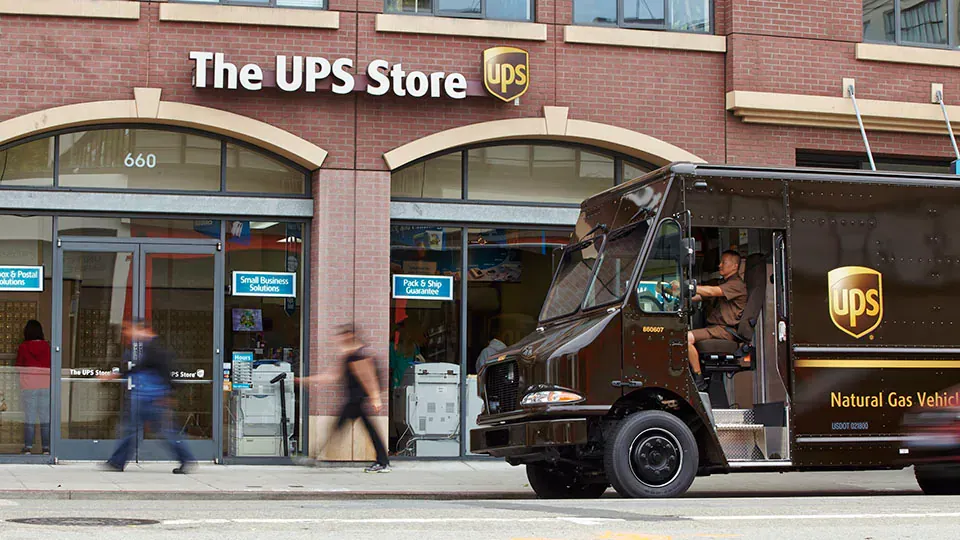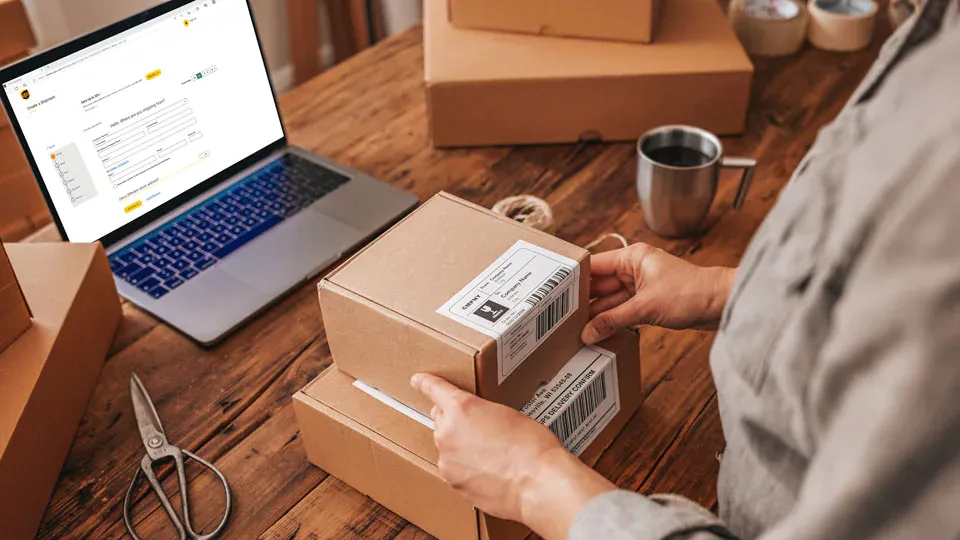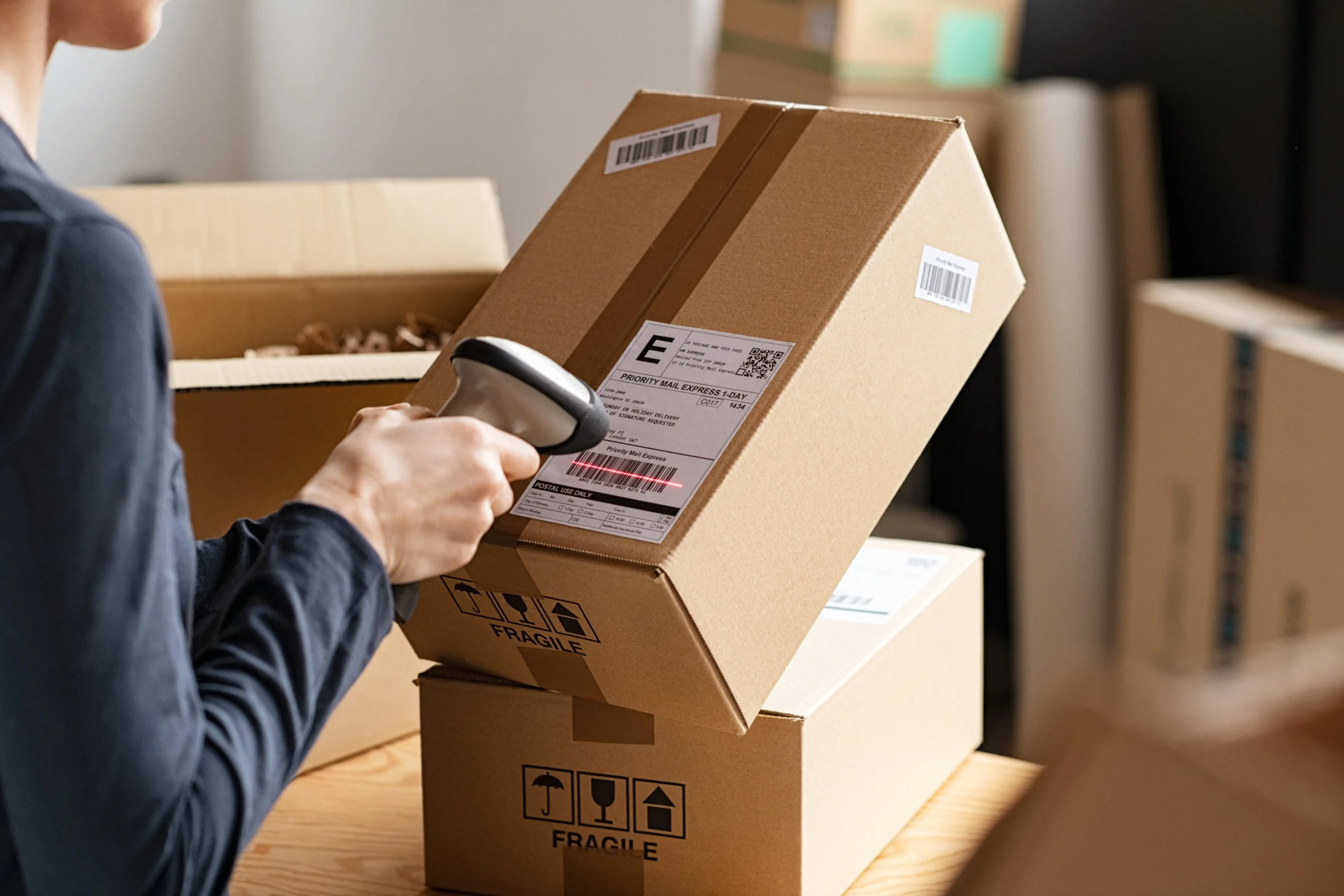Understanding UPS Shipping Zone | An Easy Guide
You should be concerned about the UPS shipping zone because the world of shipping and logistics plays a vital role in today’s interconnected economy. Whether you’re a business owner or an individual sending a package. As you read through, you will understand the intricacies of shipping services.

What are UPS Shipping Zones?
UPS Shipping Zones refer to the geographical divisions established by United Parcel Service (UPS) within the United States.
These zones are used to determine shipping rates, transit times, and delivery costs for packages sent through UPS’s extensive network.
The United States is divided into a total of eight UPS shipping zones, numbered from Zone 2 to Zone 9.
Zone 2 represents the closest proximity to the shipper’s location, while Zone 9 represents the farthest distance. The zone assignments are based on the distance between the origin and destination ZIP codes.
The primary factor influencing the division of shipping zones is the transportation network’s efficiency.
By categorizing destinations based on proximity to the origin, UPS can streamline its operations and optimize delivery routes.
This approach helps ensure that packages are delivered promptly while keeping shipping costs as economical as possible.
It’s important to note that UPS shipping zones are not static and can vary depending on the shipper’s location and the destination ZIP code.
As a result, packages shipped between different origin-destination combinations may have different zone assignments, leading to variations in shipping costs and delivery times.
Understanding UPS shipping zones is crucial for businesses and individuals who frequently ship packages.
By knowing the specific zone assignments, shippers can accurately estimate shipping costs, select appropriate delivery options, and manage customer expectations regarding transit times.
How to Determine UPS Shipping Zones
Determining UPS shipping zones involves considering various factors, including distance, ZIP codes, and the UPS Zone Chart. Let’s explore the methods used to determine UPS shipping zones:
1. UPS Zone Chart
UPS provides a Zone Chart that outlines the zone assignments based on the origin ZIP code and the destination ZIP code.
The chart is a valuable tool for quickly identifying the shipping zone for a specific shipment.
By locating the origin and destination ZIP codes on the chart, shippers can determine the corresponding zone and understand the implications it has on shipping costs and transit times.
READ ALSO!!!
- How do I Request a Refund for UPS Express?
- Can I Track My UPS Mail Package Without a Tracking Number?
- How Do I Track a UPS Package if it’s Being Rescheduled for Delivery?
- How Do I Track My UPS Package Using a Tracking ID?
2. ZIP Codes
UPS primarily relies on ZIP codes to determine shipping zones. Each ZIP code falls within a particular shipping zone.
The first digit of a ZIP code generally corresponds to a broader region, while subsequent digits provide more specific information.
By comparing the origin ZIP code with the destination ZIP code, shippers can identify the respective shipping zones.
3. Online Tools and Resources
UPS offers online tools and resources that simplify the process of determining shipping zones.
The UPS Zone Locator tool, available on the UPS website, allows users to enter the origin and destination ZIP codes to obtain the corresponding shipping zone.
Additionally, UPS Developer Kit provides APIs and integration tools for businesses to incorporate shipping zone calculations into their systems.
It’s important to note that UPS shipping zones are dynamic and subject to periodic updates.
Shippers should regularly consult the UPS Zone Chart or utilize online tools to ensure they have the most up-to-date information for accurate zone determination.
What are the Implications of UPS Shipping Zones?
Understanding the implications of UPS shipping zones is essential for businesses and individuals alike.
These shipping zones have significant impacts on shipping costs, delivery times, and customer satisfaction. Let’s delve into the implications of UPS shipping zones in more detail:
1. Shipping Costs
UPS shipping zones directly influence shipping costs. As the distance between the origin and destination increases, the shipping costs tend to rise.
Packages shipped to zones closer to the origin generally incur lower shipping charges compared to those sent to zones farther away.
Shippers must consider the zone assignments to accurately estimate shipping costs and factor them into their budgeting and pricing strategies.
2. Delivery Time
UPS shipping zones also play a crucial role in determining delivery times. Packages shipped to nearby zones generally have shorter transit times compared to those sent to distant zones.
This consideration becomes particularly important when time-sensitive deliveries are involved.
Shippers should be aware of the zone assignments to manage customer expectations regarding delivery timelines and ensure timely fulfillment of orders.
3. Customer Expectations
Shipping zones can influence customer expectations. Customers who are located in closer zones may expect faster delivery times, while those in distant zones may anticipate longer transit times.
Businesses must communicate accurate and transparent information about estimated delivery times based on the specific shipping zones.
Managing customer expectations can help enhance satisfaction and build trust.
4. Optimizing UPS Shipping Zones
To optimize UPS shipping zones and mitigate the associated implications, consider the following strategies:
5. Warehouse Location
Strategically locating warehouses closer to high-demand areas or within zones with a larger customer base can help reduce shipping costs and transit times.
This approach allows for faster order processing and potentially lower shipping charges for customers within nearby zones.
6. Inventory Management
Efficient inventory management involves strategically allocating inventory across different warehouses or distribution centers based on shipping zones.
This practice ensures that products are stored in facilities that minimize shipping distances and reduce overall transportation costs.
7. Shipping Methods
Analyze shipping methods offered by UPS to determine the best option for each shipping zone. UPS provides a range of services with varying delivery times and costs.
Choosing the appropriate shipping method for each zone can optimize both cost and delivery efficiency.
What Strategies Should I Use for Optimizing UPS Shipping Zones?
Optimizing UPS shipping zones involves strategic decision-making and careful planning.
By implementing the following strategies, businesses and individuals can streamline their shipping operations and maximize efficiency:
1. Warehouse Location
Consider the geographic distribution of your customer base and strategically locate warehouses or fulfillment centers.
Placing warehouses in proximity to areas with high customer demand can significantly reduce shipping distances and costs.
By minimizing the distance between the origin of the shipment and the destination zone, you can achieve faster delivery times and potentially lower shipping expenses.
2. Inventory Management
Efficiently allocate inventory based on shipping zones. Analyze the demand patterns of different zones and distribute inventory accordingly.
By storing products in warehouses located within or near the corresponding shipping zones, you can minimize shipping distances and transit times, resulting in improved customer satisfaction and cost savings.
3. Shipping Methods
Choose the appropriate shipping method for each shipping zone. UPS offers various shipping services with different delivery times and costs.
Evaluate the urgency and cost sensitivity of each shipment and select the most suitable shipping method accordingly.
For example, expedited services may be preferable for closer zones where faster delivery is expected, while ground shipping might suffice for more distant zones.
4. Negotiate with UPS
If your business has a significant shipping volume, consider negotiating shipping rates with UPS.
Demonstrating consistent shipping volume and a strong partnership can provide leverage for negotiating better rates based on shipping zones.
Lower shipping costs can have a positive impact on your bottom line and enable you to offer competitive pricing to customers.
5. Utilize Third-party Logistics (3PL) Providers
Working with experienced 3PL providers can help optimize shipping zones.
These providers have extensive knowledge of shipping networks and can assist in strategically selecting warehouses, managing inventory, and optimizing shipping routes.
Leveraging their expertise can streamline your shipping processes and enhance efficiency.
6. Analyze Data and Shipping Patterns
Regularly analyze shipping data and patterns to identify areas for improvement.
Utilize shipment tracking and reporting tools to gain insights into shipping costs, delivery times, and customer feedback.
By monitoring and analyzing this data, you can identify opportunities for optimization and make informed decisions regarding shipping zones.
By implementing these strategies, businesses and individuals can effectively optimize UPS shipping zones, reduce costs, enhance delivery times, and improve overall customer satisfaction.
That being said, we think it is time to explore tools, resources, and best practices that can further support the optimization of UPS shipping zones.
Tools and Resources for Managing UPS Shipping Zones

Managing UPS shipping zones can be made more efficient and accurate by utilizing various tools and resources.
These tools can help determine shipping zones, calculate costs, and streamline shipping operations.
Here are some valuable tools and resources for managing UPS shipping zones:
1. UPS Zone Locator
The UPS Zone Locator tool is available on the UPS website. It allows users to enter the origin and destination ZIP codes to quickly identify the corresponding shipping zone.
This tool provides a convenient way to determine shipping zones and plan shipping strategies accordingly.
2. UPS Developer Kit
The UPS Developer Kit provides a comprehensive set of APIs and integration tools for businesses to incorporate UPS services, including shipping zones, into their systems.
It allows businesses to integrate real-time shipping calculations, track packages, and automate shipping processes based on shipping zones.
The UPS Developer Kit is especially beneficial for businesses with high shipping volumes and complex logistics requirements.
3. Shipping Software Solutions
Various third-party shipping software solutions integrate with UPS services and provide advanced features for managing shipping zones.
These software solutions can automate shipping processes, calculate shipping costs based on zones, generate shipping labels, and provide shipment tracking.
Examples of popular shipping software include ShipStation, Shippo, and Easyship.
4. UPS Account Tools
If you have a UPS account, you can access additional tools and resources for managing shipping zones.
These tools include UPS WorldShip, UPS CampusShip, and UPS Internet Shipping.
These platforms allow you to calculate shipping costs, print shipping labels, schedule pickups, and manage shipping preferences based on shipping zones.
5. Customer Support and Documentation
UPS provides comprehensive customer support and documentation to assist with managing shipping zones.
The UPS website offers guides, tutorials, FAQs, and user manuals that provide in-depth information on shipping services, rates, and managing shipping zones effectively.
Additionally, UPS customer service representatives are available to answer specific questions and provide assistance related to shipping zones.
Best Practices and Tips for Businesses and Individuals
When it comes to managing UPS shipping zones, there are several best practices and tips that businesses and individuals can follow to optimize their shipping operations.
Here are some valuable recommendations:
1. Research and Planning
Prioritize research and planning before shipping any packages. Understand the UPS shipping zones relevant to your business or shipment destinations.
Familiarize yourself with the UPS Zone Chart and utilize online tools to determine the shipping zones accurately.
This knowledge will help you estimate shipping costs, select appropriate shipping methods, and set customer expectations correctly.
2. Negotiating with UPS
If your business frequently ships a significant volume of packages, consider negotiating shipping rates with UPS.
Building a strong partnership with UPS and demonstrating consistent shipping volume can provide leverage for negotiating better rates, especially based on shipping zones.
Lower shipping costs can improve your profitability and competitiveness in the market.
3. Communicate Shipping Zone Information
Communicate shipping zone-related information to your customers. Set accurate expectations regarding delivery times based on shipping zones.
Provide estimated delivery timelines on your website, order confirmation emails, and shipping notifications.
Transparent communication helps manage customer expectations, reduces inquiries, and enhances overall customer satisfaction.
4. Package Weight and Dimensions
Accurately measure and weigh your packages before shipping. UPS shipping costs are determined based on factors such as weight, dimensions, and shipping zones.
Improper measurements can lead to inaccurate shipping quotes and potential additional charges.
Use appropriate packaging materials to protect your products during transit and ensure accurate weight and dimension calculations.
5. Consider Transit Times
When planning shipments, consider the transit times associated with different shipping zones. Understand the time it takes for packages to reach different zones and plan accordingly.
This is especially important for time-sensitive shipments or meeting customer expectations.
Choosing faster shipping methods or strategically positioning inventory closer to high-demand zones can help reduce transit times.
6. Utilize Tracking and Notifications
Take advantage of UPS’s tracking and notification services. Provide tracking numbers to your customers, enabling them to monitor the progress of their shipments.
Additionally, leverage UPS’s notification options to automatically update customers about package status and estimated delivery times.
This proactive communication enhances customer satisfaction and provides a better shipping experience.
7. Continuous Evaluation and Optimization
Regularly evaluate your shipping operations and make adjustments based on performance metrics.
Analyze shipping costs, delivery times, customer feedback, and other relevant data to identify areas for improvement. Continuously optimize your shipping strategies, warehouse locations, inventory allocation, and shipping methods to ensure maximum efficiency and cost-effectiveness.
READ ALSO!!!
- Where Can I Find My UPS Tracking ID?
- How Do I Track a UPS Package if the Tracking Id Isn’t Working?
- How Do I Track a UPS Package if the Tracking ID is Lost?
- How Do I Track a UPS Package if the Tracking ID is Incorrect?
Conclusion
Understanding and effectively managing UPS shipping zones is crucial for businesses and individuals involved in shipping packages.
UPS shipping zones have significant implications on shipping costs, delivery times, and customer satisfaction.
By considering the distance between origin and destination ZIP codes, UPS has divided the United States into distinct shipping zones, ranging from Zone 2 to Zone 9.
By implementing these strategies as stated in this post and adhering to best practices, businesses and individuals can optimize UPS shipping zones, reduce costs, enhance delivery times, and improve overall customer satisfaction.
Effectively managing shipping zones ensures smooth and efficient package delivery within the UPS network, contributing to successful shipping operations and customer loyalty.
